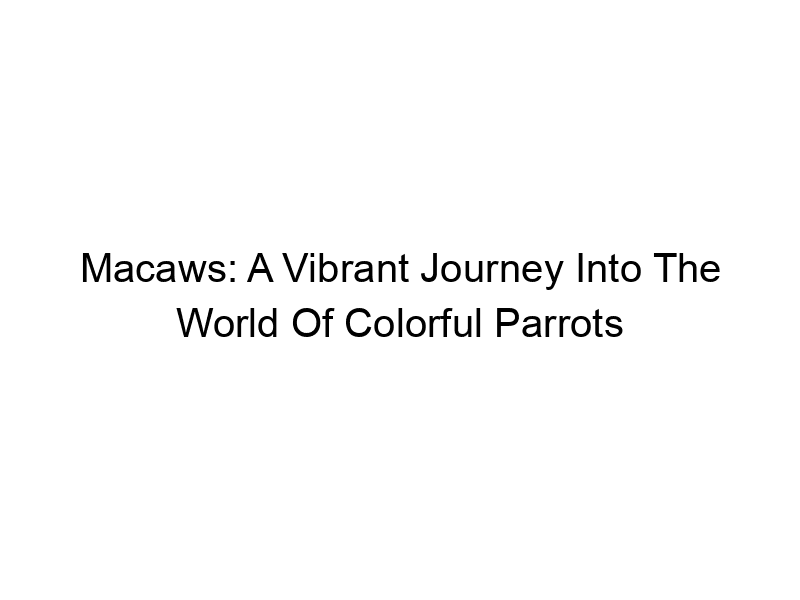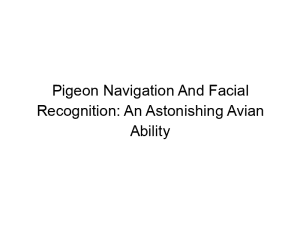Have you ever been captivated by a flash of brilliant blue, scarlet, and green soaring through the rainforest canopy? That’s likely a macaw, one of the most stunning and intelligent birds on Earth. The Colorful World of Macaws: Fun Facts About These Vibrant Parrots is far more fascinating than you might imagine. This comprehensive guide dives deep into the lives of these incredible creatures, exploring their vibrant plumage, unique behaviors, and the conservation efforts vital to their survival. Prepare to be amazed as we uncover surprising facts, dispel common myths, and celebrate the beauty of these magnificent parrots.
Macaws belong to the Ara genus, a group within the Psittacidae family (parrots). They are characterized by their large size, long tails, and, of course, their incredibly vibrant plumage. This striking coloration serves various
purposes, from camouflage to mate attraction.
Species Diversity: A Rainbow of Macaws
There are numerous macaw species, each boasting its own unique color pattern and geographic distribution. The Scarlet Macaw ( Ara macao), with its iconic red, yellow, and blue feathers, is perhaps the most recognizable. Others include the Blue-and-gold Macaw (Ara ararauna), the Hyacinth Macaw (Anodorhynchus hyacinthinus), and the Green-winged Macaw (Ara chloropterus).
The Science of Macaw Colors: Pigments and Patterns
Feather Pigments: Nature’s Palette
The dazzling colors of macaws aren’t just for show; they’re a result of complex pigment molecules embedded within their feathers. These pigments, such as carotenoids (yellow, orange, red) and melanins (black, brown, gray), interact to create the stunning array of colors we see.
The Role of Color in Macaw Behavior
Color plays a crucial role in macaw communication and social interactions. Bright plumage helps attract mates, establish dominance within a flock, and even communicate emotions. The intensity and vibrancy of the colors can indicate an individual’s health and fitness.
Macaw Habitats and Distribution: From Rainforests to Savannas
Rainforests: The Macaw’s Prime Real Estate
Macaws are predominantly found in the tropical and subtropical regions of Central and South America. Their preferred habitats are dense rainforests, where they can find abundant food sources and suitable nesting sites.
Adaptability and Habitat Variation
While rainforests are their primary habitat, some macaw species have adapted to other environments, including drier woodlands and even savannas. Their ability to adapt is a testament to their resilience.
Macaw Diet: Seeds, Nuts, and Fruits
A Diverse Diet: Meeting Nutritional Needs
Macaws are primarily frugivores, meaning their diet consists mainly of fruits, nuts, and seeds. However, they also consume other items like flowers, nectar, insects, and larvae, ensuring a balanced intake of essential nutrients.
Nutritional Requirements and Captive Care
Understanding a macaw’s dietary needs is crucial for their health, especially when kept in captivity. A balanced diet, rich in vitamins and minerals, is essential for preventing nutritional deficiencies and maintaining vibrant plumage.
Macaw Social Behavior and Intelligence: Complex Communication and Problem-Solving
Highly Social Birds: Living in Flocks
Macaws are highly social creatures, living in flocks ranging in size from a few individuals to several dozen. These flocks provide protection against predators and facilitate efficient foraging.
Vocalizations: A Symphony of Sounds
Macaws communicate using a wide range of vocalizations, from loud screeches and whistles to softer chirps and coos. These sounds convey information about location, alarm calls, and social status.
Macaw Reproduction and Lifespan: Breeding Habits and Longevity
Nesting Habits and Parental Care
Macaws are cavity nesters, meaning they utilize natural tree hollows or crevices for nesting. Both parents participate in raising the young, which remain dependent on their parents for an extended period.
Longevity: A Long and Colorful Life
Macaws are remarkably long-lived birds, with some species living for over 80 years in captivity. This longevity underscores the importance of providing them with appropriate care throughout their lives.
Macaw Conservation: Protecting These Vibrant Birds
Threats to Macaw Populations: Habitat Loss and Poaching
Macaw populations face numerous threats, including habitat loss due to deforestation and illegal poaching for the pet trade. These factors have significantly impacted many macaw species.
Conservation Efforts: Breeding Programs and Habitat Protection
Numerous organizations are working to protect macaws through breeding programs, habitat preservation, and public awareness campaigns. These efforts are critical for ensuring the survival of these magnificent birds.
Macaws in Captivity: Keeping Macaws as Pets
Responsible Pet Ownership: Meeting Macaw Needs
Keeping a macaw as a pet requires a significant commitment. These intelligent birds need a lot of attention, socialization, and specialized care to thrive.
Legal Considerations: Permits and Regulations
Owning a macaw often involves navigating regulations and obtaining permits, which vary depending on the species and location.
Comparing Different Macaw Species: Unique Traits and Characteristics
Size and Appearance: A Spectrum of Variations
The size and appearance of macaws vary considerably depending on the species. Some, like the Hyacinth Macaw, are significantly larger than others.
Temperament and Personality: Individual Differences
While macaws are generally intelligent and social birds, their individual personalities can vary. Some are more affectionate than others.
Macaw Health and Diseases: Common Illnesses and Prevention
Common Health Problems: Avian Diseases and Nutritional Deficiencies
Macaws, like other birds, are susceptible to various diseases and nutritional deficiencies. Regular veterinary care is crucial for prevention and treatment.
Veterinary Care: Ensuring Optimal Health
Finding an avian veterinarian experienced in caring for macaws is crucial for their health and well-being.
Frequently Asked Questions
What is the lifespan of a macaw?
Macaws are incredibly long-lived birds. In captivity, they can live for 50-80 years, or even longer, depending on the species and quality of care.
Are macaws difficult to care for?
Yes, macaws are demanding pets. They require significant time, financial resources, and a commitment to their long lifespan. They need large cages, plenty of interaction, and a specialized diet.
What do macaws eat?
Macaws are primarily frugivores, their diet consisting largely of fruits, nuts, seeds, and vegetables. A varied diet is essential for maintaining their health and vibrant plumage. Commercial macaw pellets can supplement a healthy diet.
Can macaws talk?
While not all macaws talk, many can learn to mimic human speech with sufficient training and interaction. Their ability to mimic sounds is impressive.
Are macaws social animals?
Macaws are highly social animals and thrive in flocks. They form strong bonds with their flock mates and even with their human companions if properly socialized.
What is the average cost of owning a macaw?
Owning a macaw is expensive. The initial purchase price can range from several hundred to thousands of dollars, depending on the species and breeder. Ongoing costs include food, veterinary care, toys, and cage maintenance, totaling thousands of dollars per year.
Where can I find a macaw for sale?
Reputable breeders are the best source for acquiring a macaw. Avoid buying macaws from pet stores, as they may come from unethical sources. Research thoroughly before purchasing.
Final Thoughts
The vibrant world of macaws is a captivating blend of beauty, intelligence, and complexity. From their stunning plumage to their intricate social interactions, these birds are a testament to the wonders of the natural world. Understanding their unique needs, challenges, and the importance of conservation efforts is crucial to ensuring their survival for generations to come. Learning about macaws is not just an exploration of a fascinating species; it’s a journey into understanding the delicate balance of our ecosystems and the responsibility we have towards preserving biodiversity. Whether you are captivated by their beauty, intrigued by their intelligence, or moved by the need for conservation, the colorful world of macaws offers a lifetime of wonder and learning. Let’s continue to appreciate and protect these magnificent birds for years to come. Learn more about macaw conservation and responsible pet ownership – the future of these vibrant parrots depends on it.




